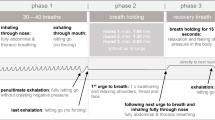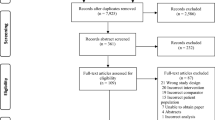Abstract
In normal individuals, novel or noxious stimuli commonly evoke the pattern of the alerting or defence response which includes cutaneous vasoconstriction, but vasodilatation in forearm skeletal muscle. We have compared cardiovascular responses evoked by sound and by indirect cooling in 60 patients with homozygous sickle cell (SS) disease and in 30 control subjects with normal haemoglobin genotype (AA). A sound of 90 dB, 1 kHz for 30 s evoked an increase in hand and forearm cutaneous vascular resistance (HCVR and FCVR) in SS patients and an increase in HCVR in AA subjects, as assessed from Doppler flowmetry. Meanwhile, a decrease in forearm vascular resistance (FVR) assessed by venous occlusion plethysmography, occurred in 14 out of 30 AA subjects and 25 out of 60 SS patients, indicating vasodilatation in forearm muscle; an increase in FVR occurred in the remainder. The proportions of SS patients and AA subjects who showed anincrease in FVR (53% vs 57%) were not significantly different. Cooling increased HCVR and FCVR in SS patients and increased FCVR in AA subjects; a decrease in FVR indicating vasodilatation, occurred in 12 out of 30 AA subjects, but in only 10 out of 60 SS patients. The proportion of SS patients who showed anincrease in FVR to cooling was greater than in AA subjects (83% vs 60%,P<0.05). Thus, SS patients are just as capable of showing the muscle vasodilatation of the alerting response to sound as AA subjects. That few SS patients showed muscle vasodilatation in response to cooling is consistent with the view that reflex vasoconstrictor responses to cooling are particularly strong in SS patients. This, in turn, is consistent with our hypothesis that the reflex vasoconstrictor response to cooling acts as a trigger for the painful crisis of SS disease by diverting blood flow away from active bone marrow.
Similar content being viewed by others
References
Serjeant GR, Deceular C, Lethbridge R, Morris J, Singhal A, Thomas, PW. The painful crisis of homozygous sickle cell disease.Br J Haematol 1994;87:586–591.
Charache S, Page DL. Infarction of bone marrow in the sickle cell disorders.Ann Intern Med 1967;67:1195–1200.
Serjeant GR, Chalmers RM. Current concerns in haematology — 1. Is the painful crisis of sickle cell disease a ‘steal’ syndrome?J Clin Pathol 1990;43:789–791.
Mohan J, Marshall JM. A comparative study in subjects with homozygous sickle cell disease and in normal subjects of responses evoked in forearm vasculature by mild, indirect cooling.Clin Auton Res 1994;4:35–40.
Hilton SM. The defence arousal system and its relevance for circulatory and respiratory control.J Exp Biol 1982;100:159–174.
Zbrozyna AW, Westwood DM. Habituation of vasodilation in the calf by repeated sensory stimulation in man.Eur J Appl Physiol 1988;58:284–290.
Mohan J, Marshall JM. Responses evoked in forearm vasculature of normal human subjects on repetition of mild, indirect cooling.Clin Auton Res 1944;4:29–34.
Mohan J, Marshall JM, Reid HL, Thomas PW, Hambleton I, Serjeant GR. The peripheral vascular response to mild indirect cooling in patients with homozygous sickle cell (SS) disease and the frequency of painful crisis.Clin Sci 1997; in press.
Mohan J, Marshall JM, Serjeant GR. Comparison of the responses evoked by mild, indirect cooling and by sound in forearm vasculature of homozygous sickle subjects.Clin Auton Res 1994;4:79.
Mohan J, Marshall JM, Serjeant GR, Reid H. Vascular responses evoked by sound and by indirect cooling in patients with homozygous sickle cell (SS) disease and the genesis of painful crisis.J Physiol 1996;497P:70–71P.
Stevens, MCG, Maude GH, Cupidore L, Jackson H, Hayes RJ, Serjeant GR. Prepubertal growth and skeletal maturation in sickle cell disease.Pediatrics 1986;78:124–132.
Mohan JS, Marshall JM, Reid HL, Serjeant, GR. Daily variability in resting levels of cardiovascular variables in normal subjects and those with homozygous sickle cell disease.Clin Autonom Res 1995;5:19–23.
Gross PM, Heistad DD, Marcus ML Neurohumoral regulation of blood flow to bones and marrow.Am J Physiol 1979;137: H440–448.
Author information
Authors and Affiliations
Rights and permissions
About this article
Cite this article
Mohan, J.S., Marshall, J.M., Reid, H.L. et al. Comparison of responses evoked by mild indirect cooling and by sound in the forearm vasculature in patients with homozygous sickle cell disease and in normal subjects. Clinical Autonomic Research 8, 25–30 (1998). https://doi.org/10.1007/BF02267600
Received:
Accepted:
Issue Date:
DOI: https://doi.org/10.1007/BF02267600




